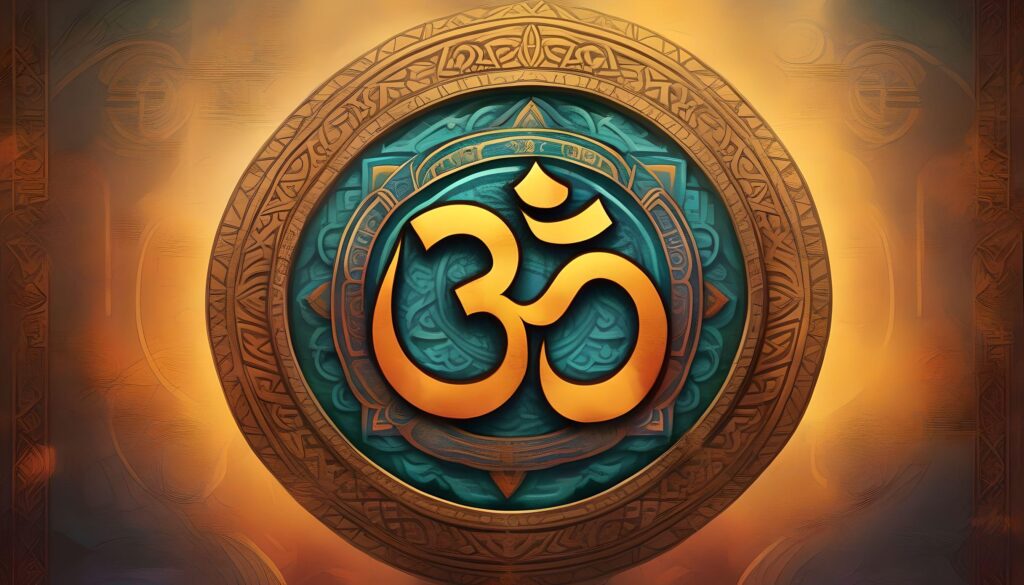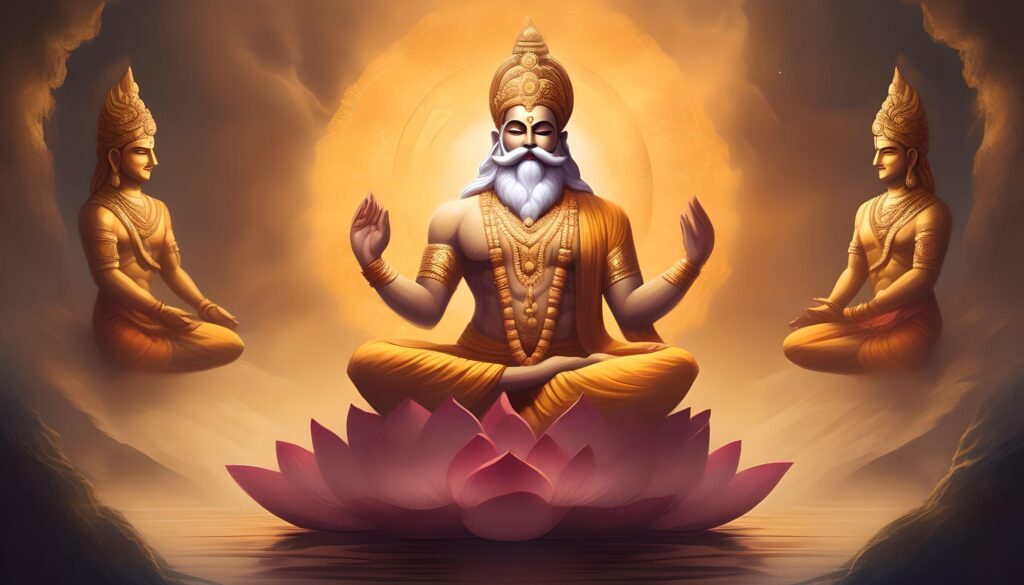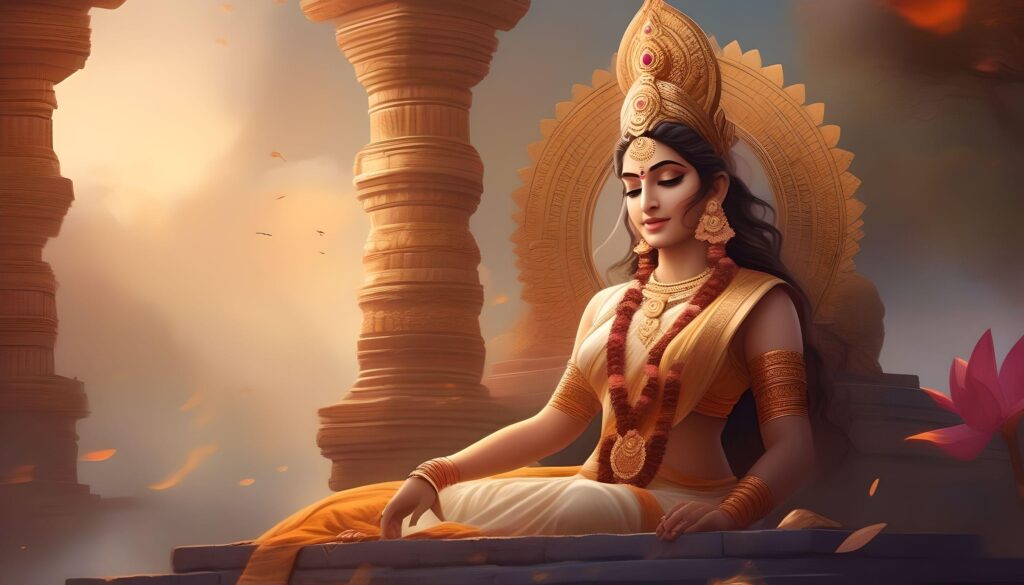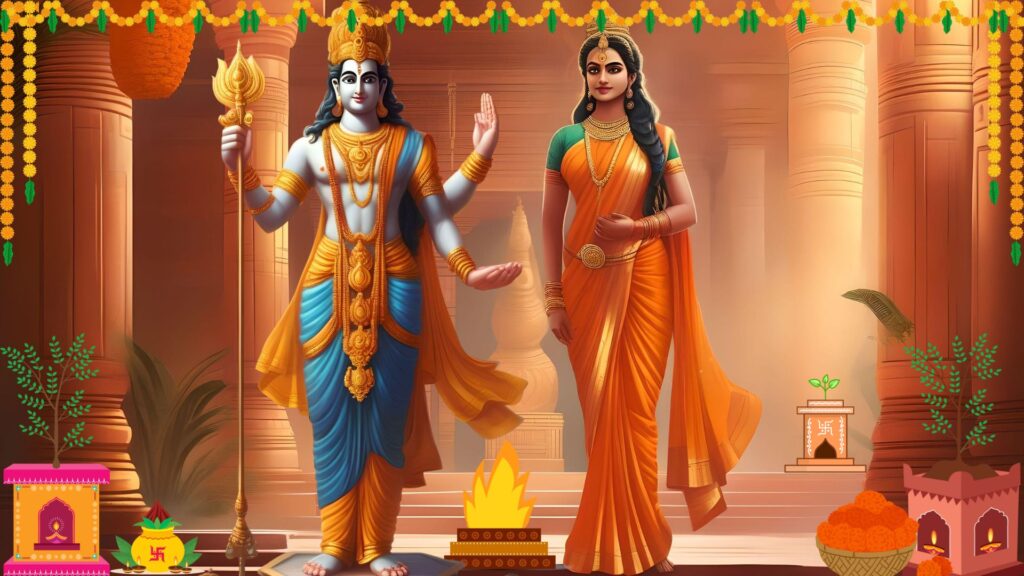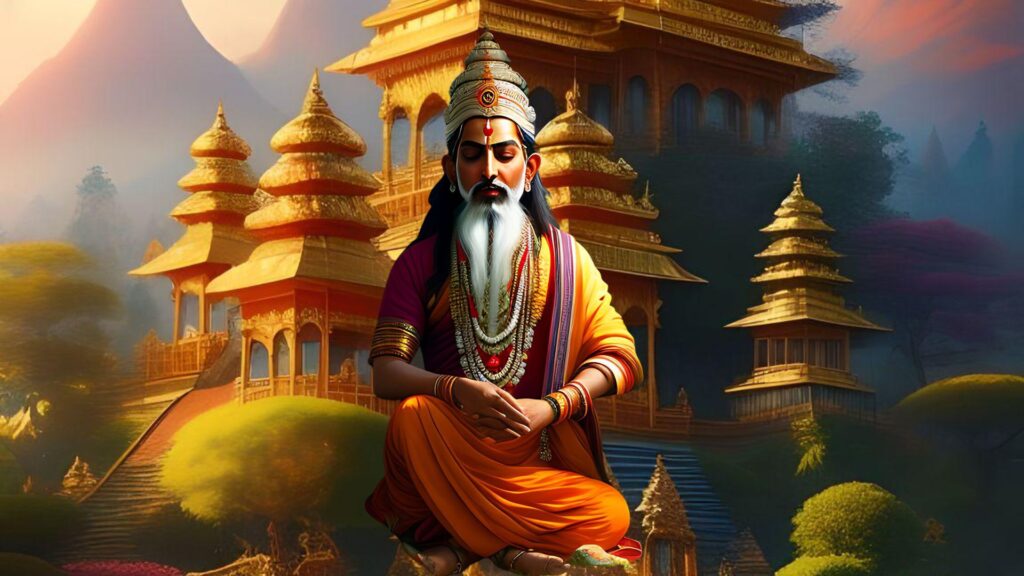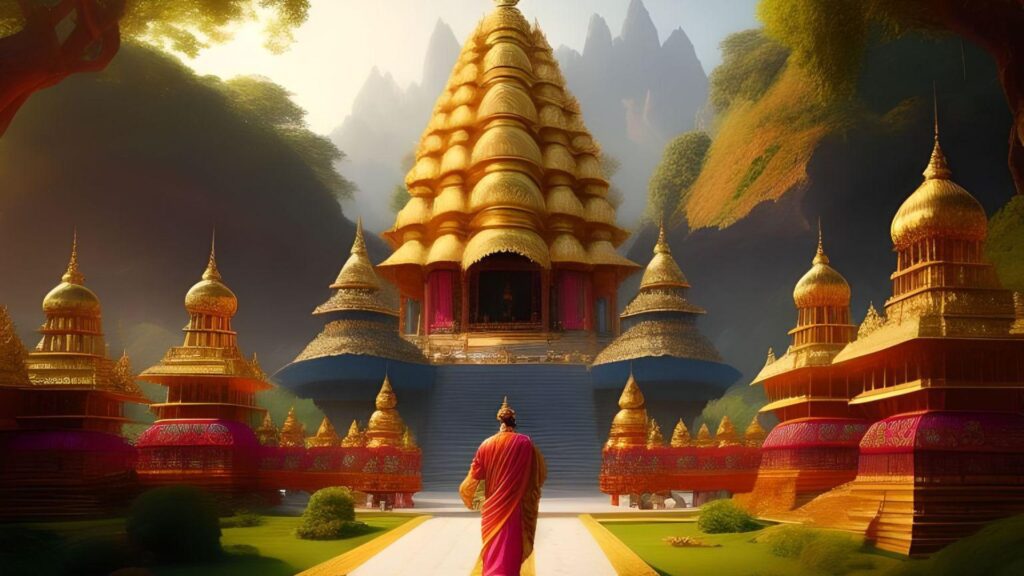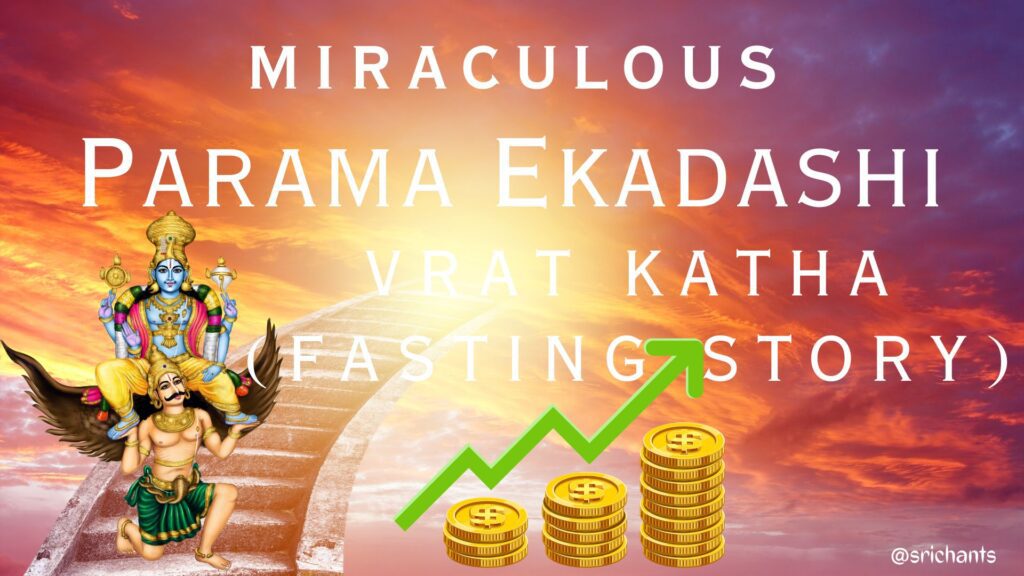Hymns from the Rig Veda: Exploring the Sacred Texts of Ancient India
Introduction
The Rig Veda, an ancient sacred text with profound implications for Indian philosophy and spirituality, possesses immense significance. The hymns of the Rig Veda, which were composed over an extended period of time between 1500 and 1000 BCE, offer insight into the ancient Vedic period’s rituals and beliefs. The origins of these compositions were ascribed to visions of seers or divine inspiration. This article aims to examine several pivotal hymns derived from the Rig Veda, conducting an in-depth analysis of their thematic elements, symbolic significance, and the profound knowledge they bestow.
Creation Hymn: The Mysteries of Existence
The primordial condition of the universe is vividly described in the Creation Hymn of the Rig Veda. It delineates a period in time characterized by the presence of a translucent sea, a chaotic expanse of water, and a balmy cosmic breath. Thought emerges from this enigmatic void, proliferating desire and establishing a connection between non-being and being. The hymn emphasizes the interdependence of the universe and the enigmatic quality of creation. Concerning the function of deities, the origin of existence, and the hidden forces that govern the universe, it generates inquiries.
To Agni (Fire): The Divine Priest
Depicted in Vedic rituals and sacrifices is Agni, the deity associated with fire. The divine cleric, invoker, and bestower of gifts, Agni is exalted in this hymn. Wood is a metaphorical representation of an animal, while liquefied butter is an animal’s beverage. Agni satisfies a vital function in uniting humanity and the divine, serving as the orifice through which the deities ingest offerings. Wishing Agni favor, the hymn beseeches the realization of ambitions, prosperity, and wealth.
To Indra: The Thunderous God of War
The Rig Veda describes the omnipotent and ferocious deity Indra as the monarch of the gods. He is frequently correlated with thunderstorms, triumphing over darkness and dehydration. The hymn to Indra describes him as the one whose power shielded the gods. It emphasizes his responsibility for maintaining the equilibrium of the elements, the earth, and the cosmos. As exemplified by his dispatching of the serpent and liberation of the rivers, Indra’s deeds symbolize his ability to surmount challenges and bestow prosperity. As the impeller of the fatigued, the weak, and those in need of assistance, the hymn extols Indra.
Purusa, the Cosmic Person: Unity in Diversity
The hymn Purusa exemplifies a pantheistic worldview by personifying Purusa as a cosmic titan from whom emanate the gods and the entirety of the universe. The statement posits that the distinct castes, including the Brahman, Kshatriya, Vaishya, and Sudra, were derived from diverse anatomical regions of Purusa. This hymn underscores the divine essence that resides within every individual and the interdependence of all entities. It emphasizes the notion that diversity can foster unity, thereby encouraging cooperation and harmony in society.
The Significance of Worship and Obeisance
The act of veneration and obeisance is consistently underscored in the Rig Veda as a means to establish a connection with the divine and to solicit blessings. It is stated that obedience is potent and capable of redressing wrongs. Destroying the deities and instilling in individuals a sense of humility and appreciation, it is regarded as the pillar of the earth and the cosmos. The hymns exhort listeners to manifest reverence and allegiance towards the deities, acknowledging their significance in upholding equilibrium and coherence within the cosmos.
The Symbolism of Dawn and Fire
Hymnias devoted to Usha, the deity of dawn, and Agni, the god of fire, are found in the Rig Veda. Usha is venerated for her prowess in bestowing prosperity and riches. The hymn to Usha represents the resurgence and prosperity that accompany the onset of a new day by depicting her ascending laden with nourishment and affluence. Praising fire, which is symbolized by Agni, serves as a purifier and facilitates a connection with the divine. The hymns dedicated to Agni beseech him for counsel, safeguarding, and the satisfaction of longings.
The Mysteries of the Heart: The Abode of God
An text attributed to the Rig Veda, the Taittariya Aranyaka explores the symbolic significance of the heart as the dwelling place of God. The heart is delineated as a lotus positioned in a downward position, within which a flame symbolizes the Supreme Being. Regarded as the epicenter of digestion, circulation, and vitality. The hymn emphasizes the capacity for spiritual enlightenment and the divine presence that resides within each person. It fosters self-reflection and the acknowledgment of the divine light that resides within.
Cremation and Transcendence
Hymns from the Rig Veda address the rituals and beliefs pertaining to the afterlife and mortality. By signifying the soul’s transcendence, the hymn to the sun urges listeners to direct their gaze towards the sun and their life-breath towards the wind. It implies that one can ascend to heaven by performing virtuous deeds and subsequently return to earth or merge with the waters. The hymn exemplifies the conviction regarding the potential for spiritual development and the cyclical nature of existence.
Friendship and Righteous Action
The Rig Veda places significant emphasis on the value of virtuous conduct and companionship. It is asserted that forsaking a friend who understands the obligation of friendship is pointless and results in deceit. Admonishing against the neglect of friendship connections, the hymn emphasizes the importance of upholding integrity and ethical behavior. It inspires individuals to cultivate interpersonal connections and pursue moral rectitude.
Marriage Vows and Blessings
Hymns worthy of the institution of matrimony are found in the Rig Veda. A hymn articulates the longing for an enduring matrimonial union in which the spouse clasps the other’s hand in the hope that it will bring prosperity and divine favor. Another hymn beseeches Indra to grant the bride her favors, supplication for the progeny of numerous sons. The hymns serve to underscore the profound importance of matrimony as a sacrosanct covenant and a wellspring of affluence and joy.
The Hymn of Creation: The Enigma of Existence
The Rig Vedic Hymn of Creation presents thought-provoking inquiries pertaining to the fundamental essence of being. It portrays an epoch devoid of any discernible distinction between day and night, existence and non-existence, as well as any understanding of mortality or immortality. Creation, according to the hymn, originated from an abyss devoid of form by means of the influence of thought and desire. It contemplates the enigmatic nature of the cosmos and the divine’s involvement in its formation. The hymn recognizes the inherent constraints of human comprehension and the perpetual perplexity that is existence.
Sharing of Wealth and Food: Generosity and its Rewards
It is emphasized in the Rig Veda that sustenance and wealth should be shared. It is stated that the fortune of the generous never decreases, whereas the food gathered by the miserly is in vain. The hymn emphasizes the correlation between benevolence and joy, encouraging listeners to support both the divine and their companions by engaging in acts of benevolence. It cautions against avarice and stockpiling, placing particular emphasis on the karmic repercussions that ensue from one’s conduct.
Conclusion
The hymns derived from the Rig Veda provide invaluable perspectives on the philosophical concepts, rituals, and ancient beliefs that characterized the Vedic era. The individuals delve into the enigmatic aspects of creation, the profound meanings of fire and dawn, the applicability of worship and obeisance, and the interdependence of all living things. Hymns of this nature encourage self-reflection, foster moral behavior, and stimulate the quest for spiritual enlightenment. The Rig Veda serves as an enduring testament to the profound spiritual legacy that once adorned ancient India, beckoning readers to reflect upon the profound insights encapsulated within its verses.

